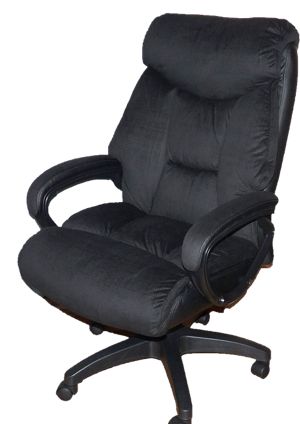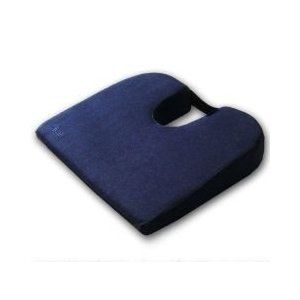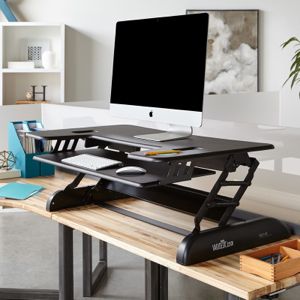In most cases, being a writer is not a get-rich-quick sort of endeavor.
There are often years of hard work in the trenches, so to speak, before we start to see any cash coming back to us.
Even if we are making an income from our work, the cost of just about everything continues to increase. You can quickly find yourself in a pickle when trying to figure out where to invest in your business, and where to tighten your belt.
After earning my income solely from writing for twenty years now, I have some experience when it comes to these sorts of decisions. Below are my recommendations for the areas that are most important to invest in, and where it’s wise to save your money if you need to.
Where Writers Should Invest Their Money
There are certain areas where a writer just can’t afford to pinch pennies. Most of these are related to one thing: your health. Your ability to make money and continue to do your creative work relies almost entirely on your ability to stay healthy and well.
Unfortunately, writing does not encourage good health. (Read “7 Reasons Writing is One of the Most Dangerous Professions” for more on that.) The more time you invest in writing, the more likely you are to struggle with things like weight gain, lack of exercise, back pain, neck pain, and hand/wrist pain, and additional complications that come from all of these. Just one bout of serious back pain, for example, can put a stop to your writing in a hurry.
So taking care of yourself is number one, and that’s reflected in the suggestions below. The second wise place to invest your money is in yourself—your education, skill building, and experience building. This is often the hardest place to do so, because it feels self-indulgent, but it’s anything but.
Even when things are tight, the following expenses are well worth it for your future as a writer and creative entrepreneur.
 1. Chair
1. Chair
Chairs. Ugh. It can be so tough to find the right one. I know I tried several, even went through the pain of setting them up in my home office and then taking them back to the office store, before I finally found one that works for me.
There’s all the advice out there that’s good advice, like “look for one with good lumbar support” and “find one with adjustable arms and adjustable height,” but when it comes right down to it, what you need is a chair you can work in that won’t cause you to hurt.
I always tend to go to those fancy ergonomically designed chairs when I’m shopping, but nine times out of ten, they’re too stiff for me, and I can feel my back complaining within five minutes of sitting in them.
You have to find one that’s right for you. The chair I landed on is a nice leather office chair with a tall back, but it wasn’t overly expensive. Neither was it one of the cheap options. I can’t remember now what it cost, but I think I found it on sale for around $200.
You don’t have to break the bank, but neither should you settle for a folding chair you have around the house or some $60 thing on wheels. You’re going to spend hours in it, so make sure it’s comfortable and that it doesn’t cause you to suffer from muscle soreness.
Make sure, too, that it works in your writing space and with your writing desk. There’s no substitute for just taking it home and trying it. Make sure the store will allow you to return it if it doesn’t work.
 2. Cushion
2. Cushion
I learned the hard way that hours in the chair are murder for your spine. Sitting puts more pressure on your vertebrae than most any other position. You’re literally pushing and compressing the bones in your back the whole time.
A cushion with a cutout in the back to allow your tailbone to rest suspended will save you a lot of pain and suffering. Unfortunately, a lot of them are poorly made out there today. The cutout is either too small to provide any benefit, or the cushion itself is too wimpy to really support you. It flattens out in no time and you’re left with little more than some fabric back there.
I’ve found that you can get the best ones at medical supply stores—the same place where you get walkers and those sorts of things. I didn’t even know they sold them until I was getting something for a relative one day and saw them.
They tend to be firmer, which is great—they will offer better support—and they typically have sizeable cutouts that open the space you need for your spine.
The good ones are often $50 or more, but they’re worth it and will last a long time.
 3. Monitor
3. Monitor
I work on my 13-inch laptop for blogging and fiction writing, and you may do that, too, but if you write for more than a couple hours a day, you really should invest in a larger monitor. I do all my daytime freelance work on my larger 21-inch screen, and it really makes a difference for one main thing: your eyes.
No screen is good for your eyes. Studies have found that extensive time looking at a computer screen can cause dry eye syndrome or a new condition called “computer vision syndrome.” Symptoms include dry, itchy eyes, redness, a gritty feeling in the eyes, soreness, excessive tearing, headaches, and blurred vision. (Read more in the post, “What Your Computer is Doing to Your Eyes.”)
A larger monitor allows your eyes to relax a bit more while you’re working, simply because the larger size makes everything easier to see. Even if you’re laptop is your main machine, you can get an extra monitor for around $150 and the related cords to hook it up for around $20 or so.
If you’re spending more than four hours a day typing away, it’s well worth the investment. You need to take care of your vision.
 4. Keyboard and Mouse
4. Keyboard and Mouse
Hand and wrist pain are common afflictions for writers, and they can make writing miserable. Avoid this fate by getting a quality keyboard and mouse. I highly recommend a split keyboard for wrist comfort. It puts your wrists in a more natural position so your muscles and tendons can relax more while you’re working.
When I wrote strictly on straight keyboards, I started to experience pain in my left wrist. It was persistent and was starting to interfere with my ability to work. Getting a split keyboard fixed the problem, and I’ve never gone back.
Your mouse is just as important. The mouse that came with your computer will likely require you to do a lot of hand and arm movements, and is probably smaller than what is best for your hand.
I use a trackball as I find the larger shape fits neatly into my palm. I can rest my hand on top of it and use my finger and/or thumb to move the trackball. You may prefer something else, but don’t be afraid to spend a little extra getting a quality mouse that limits movement and allows your hand muscles to relax.
 5. Education
5. Education
To become a better writer, and to open up your opportunities for the future, you need to invest in your own education. I’m talking writing workshops, conferences, classes, retreats, critiques, and independent editors.
These expenses can seem painful for a few reasons. One, they’re usually higher-ticket items that have to be paid all at once. A conference, for example, is often $300-500, and that’s not counting the travel, lodging, and food if you don’t live nearby. Workshops are often even more because they usually last for at least a week.
The experience you can get from these events is invaluable, though, and many times you can get a critique on your work at the same time, along with practice pitching to an agent. I’ve struggled to pay all the expenses associated with conferences in the past, but I haven’t regretted a one of them. I learned more within a few days than I would have in a year or more on my own.
Online classes and courses may be easier to swing because there is no travel involved, and you can still learn a lot. But I highly recommend you get yourself to a conference at least once every couple of years for your own advancement as a writer and entrepreneur.
As for editors, they can be pricey, too. If you get an editor or “book doctor” for your novel, for example, they usually have to spend 10 or more hours on the manuscript, and rates for a quality editor are usually $100/hour or more.
If you want to increase your chances of finding a publisher, however, or of self-publishing a quality book, this is an important step and one you can’t really afford not to take. Plus, you’ll learn a lot from every editor you work with. Just be sure to get a sample edit to begin with to make sure you two are a good match.
Where Writers Should Save Their Money
Now for the other side of the coin—where it’s best to save your money.
The following items are all “nice to haves,” and if you can afford them, they’re likely to enhance your writing life, but the point here is that it is not necessary to your health or your business to spend on these things. You can get by for years without them, and meanwhile invest in the more important things like those listed above.
 1. Standing Desk (or Treadmill Desk) or Any Desk, for That Matter
1. Standing Desk (or Treadmill Desk) or Any Desk, for That Matter
You may be surprised to see this one listed here, particularly as this is Writing and Wellness. Isn’t a standing or walking desk healthier than a regular desk?
Here’s what’s best for your health: to move around more, period. And yes, standing up for part of the day is better for you than sitting the entire time, but you don’t need an expensive standing desk to make that happen. (Read more in our post, “How to Set Up the Best, Pain-Free Healthy Writing Space.”)
I stand for most of the time when working on my freelance projects, but I don’t have a standing desk. Instead, I have a hutch I bought for about $200 about 17 years ago that holds my computer, files, printer, and a few other supplies. I love it because I can close the door on it when I’m done, and feel like I’ve put work away. But on it’s own, it doesn’t work for standing up.
I solved the problem by using one of those single file boxes you can get most anywhere. I set the box on the keyboard tray, put the keyboard on it, and use a little green plastic empty trashcan placed upside down under the mouse. Then I tilt the monitor up, and I’m good to go.
I work standing up for hours this way, and I’ve definitely noticed that it’s much better for my back. I tend to move more while standing, too, which is a great thing. It’s also easy for me to alternate standing with sitting—I simply remove the box and empty trashcan.
Several other authors who have appeared on Writing and Wellness have done the same—made their own standing desks. Here are a few links to their posts in case you’d like some ideas.
- Victoria Strauss used boxes to make her standing desk
- See Carmiel Banasky’s homemade standing desk in her main picture
Bottom line: you don’t have to spend thousands on a fancy standing, treadmill, or even regular desk unless you want to and can afford to. The main thing is that it stands at the right height for you to work at comfortably when you’re sitting down. If it’s too short, you’ll hunch over, and that’s not good for your back. Make sure your legs fit under it comfortably and that you can sit up straight.
You can use props to make just about any desk work for standing up. There are also some economical options out there to make your desk a convenient standing desk. Here’s more information for you:
- Why Your Standing Desk Isn’t Doing You Any Good
- How to Find Your Best Standing Desk (with some economical options)
- Save Your Money—Treadmill Desk Imperfect Solution for Writers
 2. Extra Apps and Software
2. Extra Apps and Software
I just recently bought the Scrivener software. I know, late to the party. I love it, and I’d recommend it to novel writers, as it’s not that expensive. But on the whole, I’ve avoided investing in software and updates and apps and all that.
The nice thing about being a writer is that you really don’t need that much. A computer and Word program is enough. It wasn’t all that long ago that most writers got by with paper and pen.
About the only time I’ve done updates on my software is when I get a new computer, and honestly, I see little benefit from having the newer versions. I could write my articles and stories on the old Word as well as the new.
I’ve thought about getting Photoshop a few times, as I used to use it as a graphic designer, but it’s pricey, and there are so many free and economical photo and graphic options out there these days that you can easily get by without it.
You may find some programs as you go that you enjoy, but when you’re having to pinch pennies, stick with the versions you have for as long as you can.
 3. Extra Tech/Gadgets
3. Extra Tech/Gadgets
We can get into so many fun things as writers. I’ve seen friends get into networking, multiple monitors, new computers and tablets, fancy speakers, the latest smartphones (necessary for social media, right?), video equipment, and more.
Again, if you can afford these things, go for it. Particularly if you’re getting into podcasting or video blogging or any of those things, equipment can be the difference between looking amateur and looking professional.
For writing alone, though, including blogging, you don’t need these things. All you need is your computer, keyboard, mouse, and printer, and you’re good to go.
 4. Fancy Website Graphics
4. Fancy Website Graphics
The more you grow as a writer, the more you’ll probably want to upgrade your website. You may eventually want to sell products on it, or have it professionally designed to reflect your particular writing niche.
You can get by for a really long time, though, using either a free theme for your site, or buying a relatively inexpensive theme that you can work with yourself. I do recommend hosting with a company like Bluehost or something similar, so that you have control over your site, but that will cost you only about $150 a year.
Then you’ll need to choose a theme that reflects your brand. There are many free ones out there that will work just fine for a long while. As you grow, you can look into buying a unique theme and then personalize that. Most are under $100 and you’re likely to use them for years.
I would recommend that you invest in learning some basic HTML—it will help you. But don’t feel like you have to pay a professional designer thousands of dollars to have a nice looking website. There are too many other options out there today. Honestly, I prefer setting up my own so that I can make updates when I want to without having to pay someone else to get into the back-end of the site.
Enjoy a professional design if you like, but if you need to save, learn some basic HTML, and use either a free or economical theme.
 5. Book Blog Tours that Don’t Provide Reviews
5. Book Blog Tours that Don’t Provide Reviews
I didn’t want to get into book marketing here, as that is a whole other subject (as far as what’s worthwhile to spend your money on), but I did want to mention this one thing.
When I published my first book, I read everywhere that a book blog tour was nearly imperative to gain exposure. So I gave it a try. As I was new on the scene and working full time, I didn’t have the know-how or the time to put the tour together myself, so I researched book tour services, chose one, and took the plunge.
Everything went fine with the tour, but here’s what I learned: If you don’t get a review from the blogger, you’ve basically wasted your money. Many of the bloggers employed in blog tours do little more than post the book cover, summary, and author bio on their site, and many of these sites get little traffic. The likelihood of turning that “exposure” into sales is very, very low.
Investing in a blog tour that gets you reviews, on the other hand, is a better way to use your money. Most book bloggers post their reviews on Goodreads as well as their personal blogs, and I’d say about a third to a half post on Amazon. (Amazon has strict rules that have made it more difficult for many book bloggers to post there.)
These tours are not as easy to do—you’ll notice that a lot of book tour services charge more for tours that include reviews. But they’re the only ones that matter when it comes to getting your book meaningful exposure.
A book blog tour without reviews is basically a waste of money. You’d be better off either guest posting to get your name out there, setting up your own blog review tour, or investing in a service that will help you get reviews.
Where do you save and invest money as a writer?

